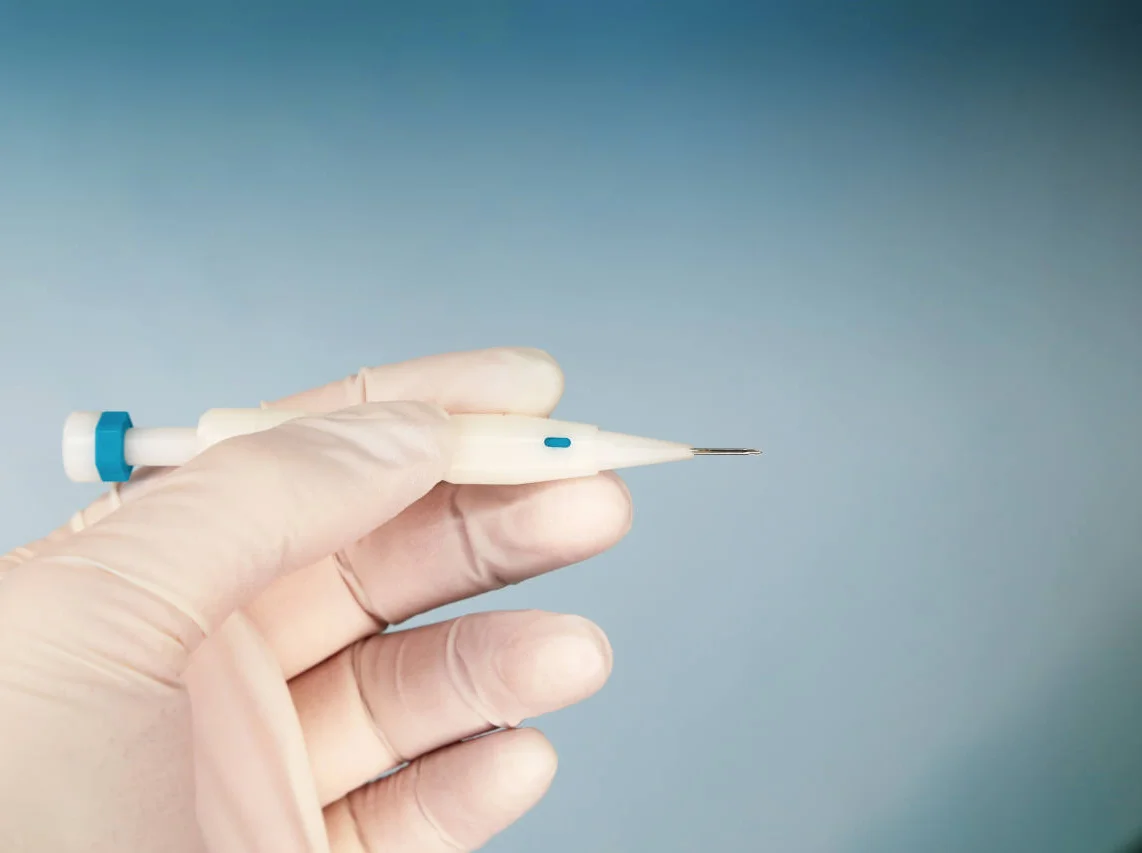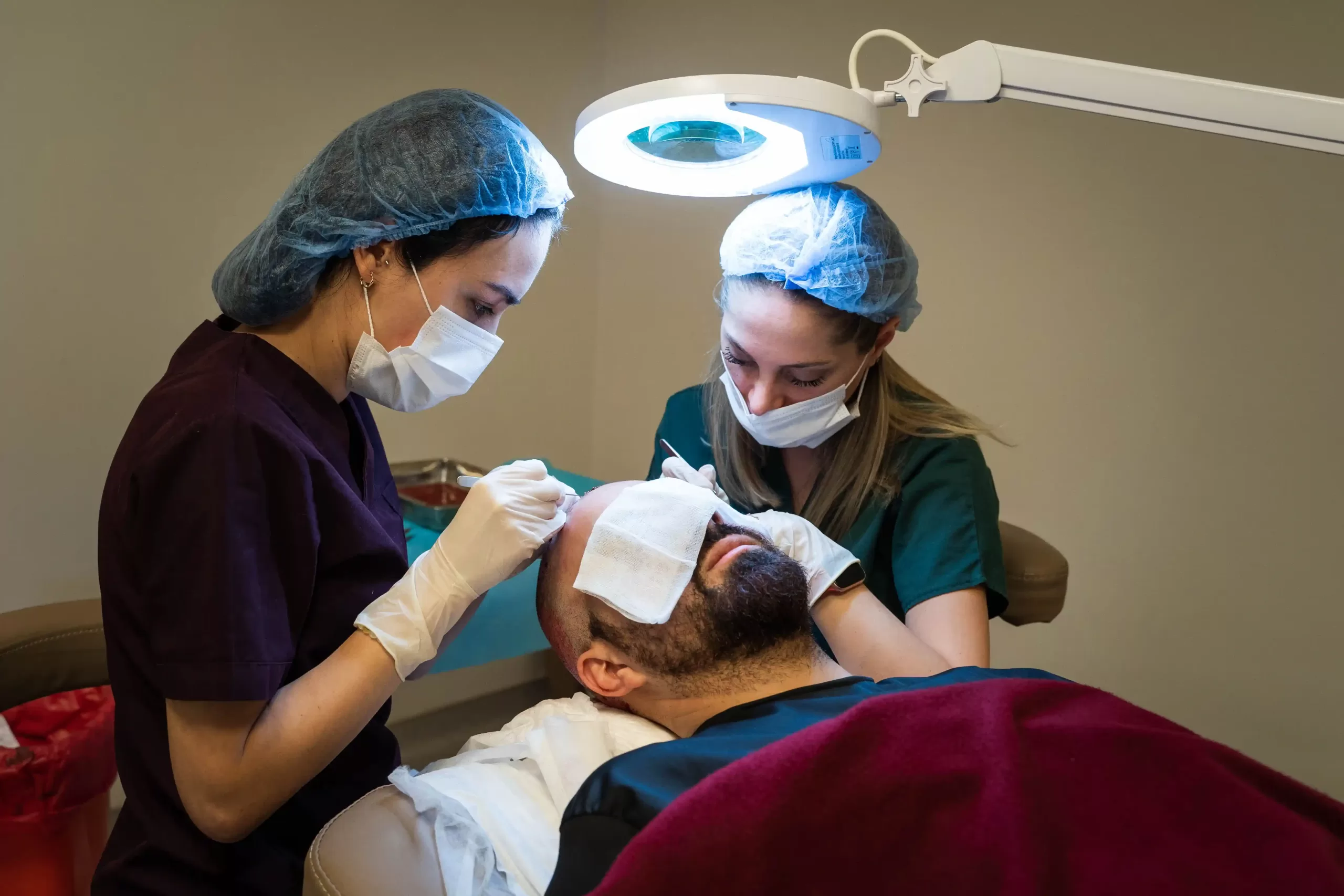DHI Hair Transplant
Direct Hair Implantation (DHI) is a revolutionary method in the field of hair transplantation, offering a more advanced and less invasive solution to hair-loss. The technique involves meticulously extracting hair follicles from a donor area and directly implanting them into balding regions. This cutting-edge technique is possible due to a specialized tool known as a CHOI pen.
DHI Technique
DHI is a hair transplant technique that uses a pen-shaped instrument to implant individual hair follicles into the scalp. It is less traumatic than other hair transplant methods and can result in a more natural- looking hairline
Understanding the DHI Technique
The DHI method involves several steps:
DHI Technique Advantages
DHI Technique Advantages
Understanding the CHOI Pen
Central to the DHI technique is a tool called the CHOI pen. This handheld device features a thin, vibrating needle used to create small punctures in the scalp. These openings serve as the new homes for the extracted hair follicles. The CHOI pen allows for greater precision during implantation, leading to a more natural and aesthetically pleasing outcome.
The Direct Hair Implantation (DHI) method, a significant milestone in hair transplantation, is characterized by the usage of a patented tool, the CHOI pen. This device extracts and implants hair follicles, minimizing tissue damage.
This advanced procedure brings considerable medical advantages. It reduces post-transplant swelling, bleeding, and discomfort, speeding up recovery time. Crucially, it significantly lowers the risk of complications such as infections.
Regarding cosmetic outcomes, the DHI technique is superior due to its capability of delivering natural-looking results. The precision of the CHOI pen allows it to make small incisions that align with the natural hair growth pattern, leading to enhanced hair density and virtually no scarring.
However, the success of a DHI procedure largely depends on the surgeon’s expertise. Clinics like Cades Clinic, renowned for their exceptional skill in DHI hair transplantation, offer a remarkable level of professionalism and care to those considering this method. Their reputation for excellence underscores their commitment to patient satisfaction and optimal results.

Best Candidates for Hair Transplant
Anyone experiencing hair loss or thinning might consider a hair transplant. The procedure is most successful for individuals with stable hair loss patterns, such as male or female pattern baldness. It may also benefit those suffering from hair loss due to trauma or certain medical treatments.

DHI Hair Transplant Advantages
The DHI method offers several unique advantages. It is less invasive as it does not require surgical incisions or stitches. This leads to a faster procedure and recovery time. Moreover, the method provides a higher survival rate for the transplanted hair follicles, as they are immediately implanted into the scalp after extraction.
DHI Hair Transplant Advantages
The DHI method offers several unique advantages. It is less invasive as it does not require surgical incisions or stitches. This leads to a faster procedure and recovery time. Moreover, the method provides a higher survival rate for the transplanted hair follicles, as they are immediately implanted into the scalp after extraction.
What Cause Hair Loss?
Hair loss, a common concern across both genders, can be triggered by numerous factors ranging from lifestyle choices to underlying medical conditions. It is crucial to understand that hair loss is not merely a cosmetic issue but often a complex interplay of various aspects of one’s health and wellbeing. Let’s delve into the main causes of hair loss:
Telogen Effluvium: Imagine a situation where your hair follicles decide to take an extended vacation. That’s precisely what happens in Telogen Effluvium. Due to physical or emotional stress, childbirth, drastic weight loss, surgery, or certain medications, hair follicles prematurely enter the resting phase, halting new hair production. This shift results in an increased amount of hair shedding, and hair appears thin all over the scalp.
Alopecia Areata: In this condition, your immune system turns against your hair follicles, mistaking them for foreign invaders. This autoimmune attack shrinks the follicles, making them stop producing new hair, leading to patchy hair loss.
Trichotillomania: This disorder is often driven by stress or anxiety, where individuals cope by compulsively pulling out their own hair. The result can be visibly patchy areas of hair loss on the scalp or other areas of the body.
Nutrient Deficiency: Just as plants wilt without proper nutrients, your hair too can suffer if your diet lacks certain elements. Deficiencies in iron, protein, or specific vitamins can lead to hair thinning and loss. Underlying Medical Conditions: Some health conditions like thyroid disease, lupus, or polycystic ovary syndrome (PCOS) can also precipitate hair-loss as part of their symptom profile.
Medication Side Effects: Unfortunately, some medications meant to treat health issues can also cause hair loss. Examples include chemotherapy drugs for cancer, blood thinners, and certain types of antidepressants.
What Cause Hair Loss?


Hair Transplant for Women
Hair transplants are not exclusively for men. Women suffering from hair loss or thinning hair can also benefit from this procedure. It can enhance their appearance by filling in thin spots and restoring a fuller head of hair.
Understanding Hair Loss Causes for Women
In women, hair-loss can result from various causes including genetic factors, hormonal changes due to pregnancy or menopause, certain medical conditions, side effects from medications, and physical or emotional stress. Understanding these causes is crucial in determining the most effective treatment plan.
Hair Transplant for Women
Hair transplants are not exclusively for men. Women suffering from hair loss or thinning hair can also benefit from this procedure. It can enhance their appearance by filling in thin spots and restoring a fuller head of hair.
Understanding Hair Loss Causes for Women
In women, hair loss can result from various causes including genetic factors, hormonal changes due to pregnancy or menopause, certain medical conditions, side effects from medications, and physical or emotional stress. Understanding these causes is crucial in determining the most effective treatment plan.





